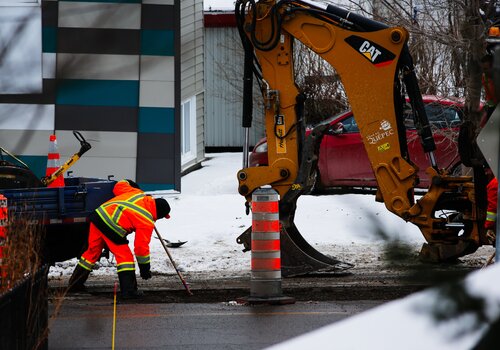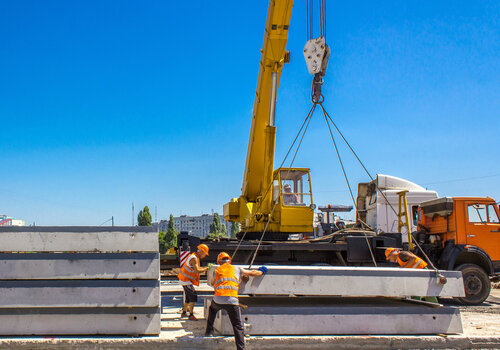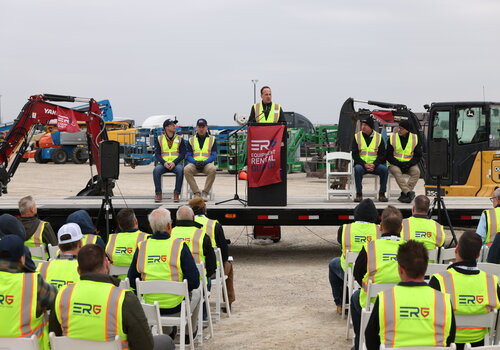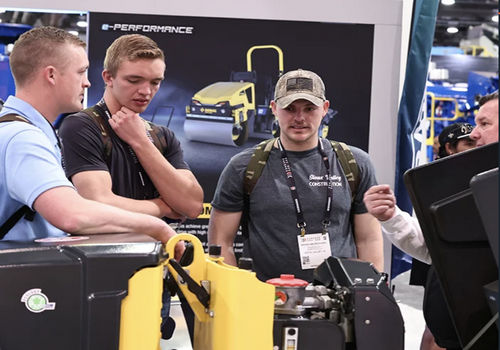Undercarriages are one of the more costly parts of an excavator to repair and replace so contractors can save a lot of money and downtime by ensuring the components of an undercarriage are treated in ways that maximize their lifespans.
Jordan Troutman, President of Pivot Equipment Parts—an aftermarket undercarriage provider—outlines three tips every contractor should consider to elongate the life of the undercarriage’s on their machines.
1. Frequently Inspect and Clean Excavator Tracks
Debris caught or left in the tracks can damage or increase components that come into contact with it. The presence of debris can also affect performance.
“Operators should check the tracks for debris and accumulation of dirt at the start of each shift as well as any time they enter the cab,” says Troutman. “Also, the type of material affects how and how often you will need to clean your undercarriage.”
If you have sandy or dry dirt in excavator tracks, remove it by swinging the arm over one side of the machine, pushing into the ground until the other track lifts off the ground and rotating the elevated track forward and reverse. Then, do the same to the opposite track.
For wet or compact material, it is best to use a shovel to remove it and the undercarriage will probably need to be cleaned more often.
When operators check the undercarriages for debris, they should also look for signs of damage to other undercarriage components (track pads, idler, roller, sprocket).
Smart operators check the tracks just after exiting the cab or just before entering the cab; they should look for material in the undercarriage or for any signs of damage. One damaged track pad will damage the next and so on until you need to replace the whole track.
2. Adjust Track Tension
Tracks are an important part of the undercarriage and often need the most frequent adjustments.
Tracks elongate over time and need to be tightened. How often the tracks need to be tightened depends on the application, the environment, and the operator. It could be part of your weekly inspection if you don’t put too many demands on the undercarriage or it could be completed daily if you do.
Tracks that don’t have enough tension will wear out more quickly than ones that are properly tensioned. Likewise, tracks that have too much tension will also wear out more quickly, so it is important to have the optimal amount of tension.
“Tracks should sag a little at the top between the two rollers. Check the machine manual of your machine to see the optimum amount of sag,” says Troutman.
How you measure sag will depend on whether your excavator is equipped with a single-top-roller undercarriage or a two-top-roller undercarriage.
For a single top roller undercarriage, open the undercarriage’s relief valve. Between the front idler and the track carrier roller, step on and place downward pressure; this will help you accurately see the amount of sag. Place something with a straight edge, such as a two-by-four, across the tracks spanning from the front idler to the track carrier roller. Find the point at which track sags the most. Measure from that point to the nearest point on the straight edge. Compare that number to the numbers specified by the manufacturer. Tighten until the tracks reach specification.
“A two-top roller undercarriage is a little easier; first, place a straight edge on top of the tracks so it reaches the front roller and the rear roller. Then, at the midpoint between the two rollers, measure the distance between the tracks and the straight edge,” says Troutman.
3. Check Components for Signs of Wear
An undercarriage is composed of many components and these components need to be checked occasionally for signs of wear.
For example, examine rollers for damage and flat parts. Rollers should be round so, if a section is flat, it is quite worn and should be replaced soon,” says Troutman. “Also, check underneath the rollers for signs of moisture. This could be a sign of leakage.
Use a caliper to measure the top and bottom rollers and record the measurement.
Look at the pins and bushings to see if they need to be turned. If the top half of the bushing appears worn, it is time to turn them. Use the caliper to measure the pins and bushings and record the measurement.
Measure the width of your track’s shoes with a tape measure and their depth with a depth gauge. Also use the depth gauge to measure rail height and the idler.
Next, compare all your numbers to numbers specified by the manufacturer in the machine’s manual.
“A little amount of time spent inspecting and treating an undercarriage every day can lead to longer undercarriage life and saved time and costs when it comes to undercarriage repair and replacement,” says Troutman.
Subscribe to the CONEXPO-CON/AGG 365 weekly newsletter to get more stories like this.












